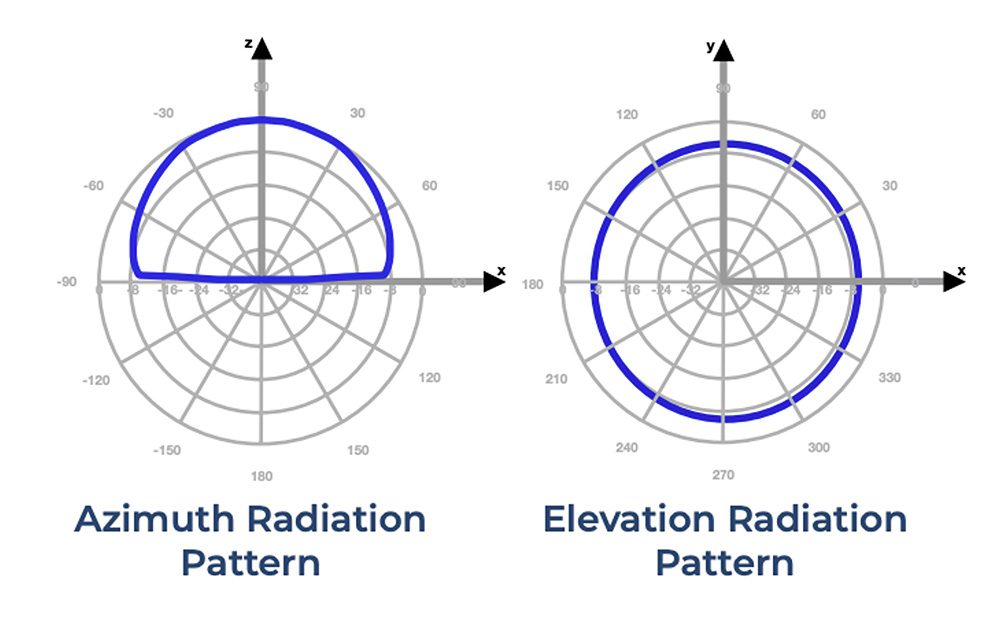It’s an all too common of an occurrence that someone connects a Radio Frequency Identification (RFID) reader to an RFID antenna mount the antenna then simply walks away. In some cases that just might work, but in most scenarios the system integrator needs to take some additional steps to optimize the overall performance in each unique situation.
The strategies are the same whether the application is retail inventory, livestock tracking, agriculture, manufacturing, distribution, healthcare, or something else.
If RFID is new to you, then optimizing the RFID antennas and readers might seem intimidating, but the process can be straightforward with this step-by-step guide.
Define the Intended Read Zone
Before any antennas are even connected, the first step will always be to define the specific area that you would like to collect your reads, or the “Intended Read Zone”. This also means that the area that you do not want to read RFID tags should also be identified.
For instance, suppose that you have two adjacent dock doors, each with four RFID antennas connected to four-port RFID readers. Each dock door will have a very distinct zone through which the target tags will travel. This zone should be where you focus the antennas.
The goal here is to read 100% of the tags that are inside of this read zone, and 0% of the tags that are not.
Find the RFID Antenna Vantage Point
Once the Intended Read Zone is defined, you can start to select the RFID Antenna Vantage points. This will consist of finding a physical location that will provide an unobstructed look at the Intended Read Zone, then adjusting the antenna angle to provide the most direct line of sight to where the target tags will be.
When possible, use antenna locations that provide diverse Vantage Points to the target tags. A very common mistake, or rather a missed opportunity, is made when two antennas are mounted in a very close proximity to each other such as in a prefabricated dock door portal. In this scenario, multiple RFID antennas are so close to each other that they virtually provide the same vantage point to the target tags. By spreading out antenna locations into diverse Vantage Points the overall performance of the antenna array will likely improve.
Leverage the Antenna RF Pattern
Every type of directional RFID antenna offers a unique RF pattern that should be taken into consideration when determining the optimal Vantage Point. RFID antennas with a lower Gain will offer a wider but shorter pattern, which makes them idea for applications where the antenna can be mounted very close to the Intended Read Zone where the target tags will be located. Smart shelves and conveyor lines are typical applications that do well with the RF patterns that lower gain antennas produce. Other applications like dock doors and other threshold can benefit from the longer and more narrow RF patterns that higher gain antennas offer.

Don’t Waste your RF
Now that the RFID antennas are installed and you’ve optimized each Vantage Point, it’s time to find the optimal Transmit Power that will put you in the best position of achieving that goal of reading 100% of the Target Tags and 0% of all the other tags in a production environment that you don’t want to read.
A key strategy here is to not waste your RF with a Transmit Power setting that is higher than what is needed. This can be achieved by continuously testing settings until the lowest one is found that will provide consistent reads when the target tag is inside the Intended Read Zone. By minimizing the transmit power, you will also minimize the probability of producing unintended tag reads from tags that are outside of the Intended Read Zone, such as on an adjacent dock.
Isolate each Antenna
Each RFID antenna or Vantage Point will have its own unique set of physical characteristics and circumstances, so each antenna should be tested and configured separately.
A common mistake, or perhaps a missed opportunity, is made when a global transmit power configuration is set across all installed readers, or antennas on a single reader. This strategy can cause poor performance since all antennas are configured based on the performance. What might work great for one antenna doesn’t necessarily work for the others.
Filter for the Strays
Now you’re consistently reading the target tags when they move through the Intended Read Zone, but the job is not yet finished. In a production environment there will typically be other tags in other areas that must be accounted for. And although those tags may be targeted by other readers and antennas, if they are outside of the Intended Read Zone for the process that you’re trying to automate they should be considered Stray or Unintended Reads.
To mitigate against these stray reads, place some test tags in other areas where other tags would be expected to be found in a production environment. Keeping the same transmit configurations that were previously found, start testing for the detection of these stray test RFID tags. If any are found, then pay attention to the Signal Strength (RSSI) values of the stray tags that were detected. If there is enough of a difference between the Signal Strengths of the Stray Tags vs. the Target Tags while inside the Intended Read Zone, then you may be able to set a filter that will ignore tag reads that are below a threshold that you determine to be Unintended Reads.
Test, Test, and Test Again
There is only one way to understand what the read data will look like in a production environment, and that is to relentlessly repeat testing. Through several iterations of collecting read data, you can use the results to direct the fine tuning of the configurations so that consistent results can be achieved in a production environment. It’s important to understand the processes and material flow and emulate what will typically happen in the production environment, both from the perspective of inside of the Intended Read Zones, as well as likely location and pathways of stray tags.
When in Doubt, Ask the RFID Experts
RFID technology promises efficient and accurate tracking, but its effectiveness depends on proper component setup and connection. Following the above steps and best practices, your RFID antenna and reader will work seamlessly, providing greater efficiency and real-time insight into your operations. If you need more help, we are here for you, just ask the RFID Experts.
